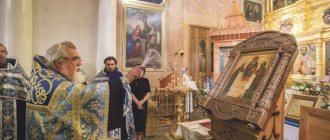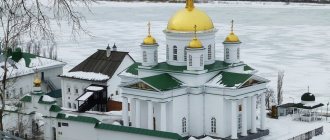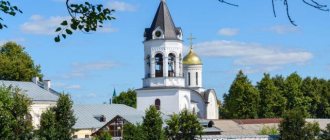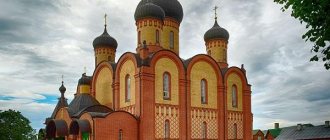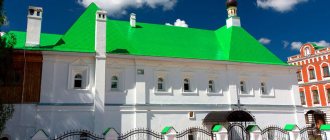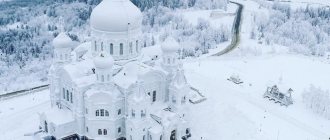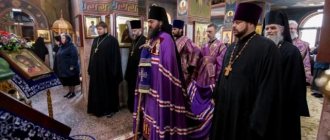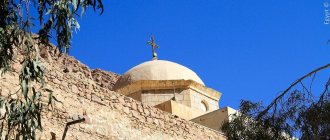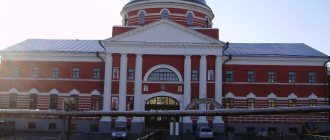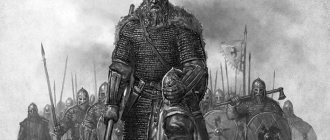Mir
Russia Moscow Simonov Monastery (Moscow) Map is loading...
{"format":"leaflet","minzoom":false,"maxzoom":false,"limit":50,"offset":0,"link":"all","sort":[""], "order":[],"headers":"show","mainlabel":"","intro":"","outro":"","searchlabel":"\u2026 \u0441\u043b\u0435\ u0434\u0443\u044e\u0449\u0438\u0435 \u0440\u0435\u0437\u0443\u043b\u044c\u0442\u0430\u0442\u044b","default":"","import-annotation":false,"width ":"auto","height":"350px","centre":{"text":"","title":"""link":"""lat":55.71376939999999677866071579046547412872314453125,"lon": 37.65659720000000021400410332717001438140869140625,"icon":""},"title":"","label":"","icon":"","lines":[],"polygons":[],"circles":[ ],"rectangles":[],"copycoords":false,"static":false,"zoom":8,"defzoom":14,"layers":["OpenStreetMap"],"image layers":[] ,"overlays":[],"resizable":false,"fullscreen":true,"scrollwheelzoom":true,"cluster":false,"clustermaxzoom":9,"clusterzoomonclick":true,"clustermaxradius":80, "clusterspiderfy":true,"geojson":"","clicktarget":"","showtitle":true,"hidenamespace":false,"template":"","userparam":"","activeicon": "","pagelabel":false,"ajaxcoordproperty":"","ajaxquery":"","locations":[{"text":"\u003Cb\u003E\u003Ca href=\"/palomnik/%D0% A1%D0%B8%D0%BC%D0%BE%D0%BD%D0%BE%D0%B2_%D0%BC%D1%83%D0%B6%D1%81%D0%BA%D0%BE% D0%B9_%D0%BC%D0%BE%D0%BD%D0%B0%D1%81%D1%82%D1%8B%D1%80%D1%8C_(%D0%9C%D0%BE%D1 %81%D0%BA%D0%B2%D0%B0)\» title=\»\u0421\u0438\u043c\u043e\u043d\u043e\u0432 \u043c\u0443\u0436\u0441\u043a\u043e\u0439 \ u043c\u043e\u043d\u0430\u0441\u0442\u044b\u0440\u044c (\u041c\u043e\u0441\u043a\u0432\u0430)\»\u003E\u0421\u0438\u043c\u043e\ u043d\u043e\u0432\ u043c\u0443\u0436\u0441\u043a\u043e\u0439 \u043c\u043e\u043d\u0430\u0441\u0442\u044b\u0440\u044c (\u041c\u043e\u0441\u043a\u0 432\u0430)\u003C/a\ u003E\u003C/b\u003E\u003Chr /\u003E\u003Ca href=\»/palomnik/%D0%A1%D0%B2%D0%BE%D0%B9%D1%81%D1%82%D0%B2% D0%BE:%D0%90%D0%BD%D0%BD%D0%BE%D1%82%D0%B0%D1%86%D0%B8%D1%8F\» title=\»\u0421\u0432 \u043e\u0439\u0441\u0442\u0432\u043e:\u0410\u043d\u043d\u043e\u0442\u0430\u0446\u0438\u044f\u003E\u0410\u043d\u043d\u043e \u0442\u0430\u0446\ u0438\u044f\u003C/a\u003E: \u0432 \u043f\u0440\u043e\u0448\u043b\u043e\u043c \u043e\u0434\u0438\u043d \u0438\u0437 \u0441\u0 430\u043c\u044b\u0445\u043a \u0440\u0443\u043f\u043d\u044b\u0445 \u0438 \u0431\u043e\u0433\u0430\u0442\u044b\u0445 \u043c\u043e\u043d\u0430\u0441\u0442 \u044b\u0440\u0435\u0439 \u0431 \u043b\u0438\u0436\u0430\u0439\u0448\u0435\u0433\u043e \u041f\u043e\u0434\u043c\u043e\u0441\u043a\u043e\u0432\u044c\u044f. \u041e\u0441\u043d\u043e\u0432\u0430\u043d \u0443\u0447\u0435\u043d\u0438\u043a\u043e\u043c \u0438 \u043f\u043b\u0435\u043c \u044f\u043d\u043d\u0438\u043a \u043e\u043c \u043f\u0440\u043f. \u0421\u0435\u0440\u0433\u0438\u044f \u0420\u0430\u0434\u043e\u043d\u0435\u0436\u0441\u043a\u043e\u0433\u043e \u2014 \u0441 \u0432\u0442. \u0424\u0435\u0434\u043e\u0440\u043e\u043c \u0432 1370-\u0445 \u0433\u0433. \u043d\u0430 \u0437\u0435\u043c\u043b\u044f\u0445, \u043a\u043e\u0442\u043e\u0440\u044b\u0435 \u043f\u043e\u0436\u0435\u044 0\u0442\u0432\u043e\u0432\ u0430\u043b \u0431\u043e\u044f\u0440\u0438\u043d \u0421\u0442\u0435\u043f\u0430\u043d \u0412\u0430\u0441\u0438\u043b\u044c\u 0435\u0432\u0438\u0447\u0425\ u043e\u0432\u0440\u0438\u043d","title":"\u0421\u0438\u043c\u043e\u043d\u043e\u0432 \u043c\u0443\u0436\u0441\u043a\u043e\u0439 \u0 43c\u043e\u043d \u0430\u0441\u0442\u044b\u0440\u044c (\u041c\u043e\u0441\u043a\u0432\u0430)”,”link”:””,”lat”:55.71376939999999677866071579046547412 872314453125,"lon":37.65659720000000021400410332717001438140869140625,"icon" :""}],"imageLayers":[]}
55.713892; 37.65717
Russia, Moscow, Vostochnaya street, 4
Moscow
Russia
Telephone:
+7 495 675 21 95
Telephone:
+7 926 113 01 72 (Elena Yuryevna – tour guide)
Email:
Simonov Monastery
- in the past one of the largest and richest monasteries in the nearest Moscow region. Founded by the student and nephew of St. Sergius of Radonezh - St. Feodor in the 1370s. on the lands donated by boyar Stepan Vasilyevich Khovrin. In the XVI-XVII centuries. was part of the belt of fortified monasteries that protected the approaches to Moscow from the south. The vast majority of the buildings were demolished in the 1930s; The area is partially built up. Currently, the refectory is being restored, the outbuildings and the fraternal building are being used as workshops; the surviving walls and towers are in an abandoned state. Currently, there is a parish church of the Tikhvin Icon of the Mother of God on the territory of the monastery.
History[edit]
The monastery was founded downstream of the Moskva River from Moscow by the disciple and nephew of St. St. Sergius of Radonezh - St. Fedor, a native of the city of Radonezh on the lands that were donated by the boyar Stepan Vasilyevich Khovrin, who accepted monasticism with the name Simon, from which the name of the monastery comes. The monastery later maintained contact with the Khovrin (Golovin) family; here was the tomb of his representatives.
It was believed that the monastery was founded in 1370. Modern researchers attribute the foundation to 1375-1378 or to the spring-autumn of 1377.
In 1379 the monastery was moved to its current location; In the same place (in Old Simonovo), the Church of the Nativity of the Virgin Mary was preserved, in which in the 18th century the burials of the heroes of the Battle of Kulikovo - Alexander Peresvet and Andrei (Rodion) Oslyabi were discovered, which have survived to this day.
The Monk Sergius of Radonezh considered the Simonov Monastery to be a “branch” of his Trinity Monastery and always stayed here during his visits to Moscow. Famous church figures emerged from the walls of the Simonov Monastery: St. Kirill Beloezersky (1337-1427), Metropolitan Jonah, Patriarch Joseph, Metropolitan Gerontius, Archbishop John of Rostov. In the 16th century, the famous figure of non-covetousness, the monk Vassian, and the theologian Maxim the Greek lived and worked in the monastery.
Over the long years of its existence, the Simonov Monastery was raided more than once and was devastated during the Time of Troubles.
In former times, the monastery was one of the most famous and revered in the immediate Moscow region; A huge number of people and rich material deposits flocked here. The monastery was especially loved by Tsar Fyodor Alekseevich (the elder brother of Peter I), who had his own cell here for solitude.
In 1771, the monastery was abolished by Catherine II and, due to the spreading plague epidemic at that time, it was turned into a plague isolation ward. Only in 1795 was it restored to its religious capacity through the petition of Count Alexei Musin-Pushkin. At the same time, its first rector was Archimandrite Ignatius (Ushakov), who was transferred from the Great Tikhvin Monastery of the Novgorod diocese.
After the establishment of Soviet power in 1920, the monastery was again abolished. In 1923, a museum was established in the monastery, which existed until 1930. The director of the museum, Vasily Ivanovich Troitsky (1868-1944), established relations with the church community: he allowed services in one of the monastery churches in exchange for the provision of watchmen and janitors at the expense of the community. In the 1920s, the architect S.K. Rodionov carried out restoration of the monastery buildings.
In January 1930, a government commission recognized that some of the ancient buildings on the territory of the monastery could be preserved as historical monuments, but the cathedral and walls should be demolished. Five of the six churches were demolished, including the Assumption Cathedral, the bell tower, the gate churches, as well as the Watchtower and Tainitskaya towers with their adjacent buildings. During the working cleanups, all the walls of the monastery were dismantled, except for the southern one, and the cemetery was also abolished. On the site of the demolished buildings, the ZIL Palace of Culture was built in 1932-1937.
In 1991, the Church of the Tikhvin Mother of God of the Simonov Monastery was returned to the Church. It was given to the first and at that time only Orthodox community of people with hearing impairments.
In 1995, worship was resumed in the Temple. It comes with a parallel translation into sign language. The restoration of the destroyed temple building is progressing much more difficult.
Currently, only a small part of the buildings of the Simonov Monastery has been preserved:
- The southern wall with three towers: the corner “Dulo” (four battle tiers, a stone tent, a two-tier observation tower), the pentagonal “Kuznechnaya” and the round “Salt”.
- “New” refectory with the Church of the Holy Spirit (1677-83; architect O. Startsev)
- Brethren building of the 17th century, “old” refectory (1485, 17th century)
- Master's Chamber
- Outbuilding - “malting” or “drying”
Visit to the monastery
Since the monastery is not active today, you can visit its territory at any time . If you want to not only admire the preserved remains of the architectural complex of the monastery, but also learn more about its history and get acquainted with the shrines, visit the monastery library , which operates on the territory. It is open every day except Friday
- on weekdays – from 15.00 to 19.00;
- on weekends – from 10.00 to 19.00;
- On Sundays, Orthodox conversations are held here, starting at 15.00.
Important! When going to this monastery, remember that all pilgrims and tourists should observe a certain form of clothing: women need to cover their heads, wear skirts or dresses that cover their knees, and do not expose their shoulders; Men are not allowed to be on the premises wearing shorts, bare torsos, or hats.
Patronal holidays[edit]
- Icon of the Blessed Virgin Mary “Tikhvin”
- July 9 - Sergius of Radonezh, Venerable
- Cathedral of Moscow Saints, July 18 (Discovery of venerable relics), October 8 (Repose) - Alexander Svirsky, reverend
- September 12 - All Saints' Cathedral
- the first Sunday after Trinity Day - Theodore, Archbishop of Rostov, Saint
- December 11
Abbots
- St. Theodore (1370 - 1386)
- St. Gerontius (mentioned 1447 - 1453)
- Niphon (1482 - 1484)
- St. Vassian (Sanin) (ca. 1502 - 1506)
- John (1514 - February 9, 1520)
- Philotheus (1560 - 1562)
- Paul (September 1612 - August 1613)
- Levky (1620 - July 6, 1634)
- Joseph (Dyakov) (1639 - 1642)
- Paul (May 1671 - September 15, 1674)
- Rafail (Krasnopolsky) (beginning 1704 - 1708)
- Joseph (Turoboysky) (1708 - 1710 [1])
- Dorofey (Korotkevich) (1710 - 1712)
- Kirill (Florinsky) (? - July 1741)
- Pavel (Ponomarev) (November 27, 1783 - October 13, 1785)
- Apolloniy (Matveevsky) (1851 - 1861)
- John (Metropolitan) (March 26, 1881 - August 12, 1889)
- Andrey (Sadovsky) (1889 - 1893)
- Alexander (Zakke-Zakkis) (April 16 - September 3, 1893)
- John (Kratirov) (March 12, 1903 - December 5, 1908)
- Misail (Krylov) (December 4, 1908 - ?)
- Philip (Perov) (not earlier than 1912 - 1917)
- Jacob (Pyatnitsky) (1921 - March 1922)
- Peter (Rudnev) (1923 - 1927 [2])
…
…
…
…
…
Links[edit]
- Temple of the Tikhvin Icon of the Mother of God. Patriarchal Metochion of the Simonov Monastery in Moscow
- Metochion of the Patriarch of Moscow and All Rus'. Temple of the Tikhvin Icon of the Mother of God of the Simonov Monastery in Moscow. Community of deaf-blind, hard-of-hearing, deaf and hard-of-hearing Orthodox Christians
- Simonov Monastery (2016, 735 pages)
- Encyclopedia "Tree". Moscow Simonov Monastery
- Pravoslavie.ru. Simonov: the most formidable and most forgotten monastery in Moscow
Used materials
- “Simonov Monastery” // Russian Orthodoxy website
- Moscow. Simonov Monastery // “People's catalog of Orthodox architecture”
- “Simonov Monastery” // Library of the site “Museum of Frescoes of Dionysius”
- Mikhail Vostryshev “Orthodox Moscow. All the temples and chapels."
[1] Evgeniy (Bolkhovitinov), Metropolitan. Historical dictionary. About the writers of the clergy of the Greek-Russian Church who were in Russia, M: Trinity Sergius Lavra, 1995, p. 172.
[2] Lyudmila Kulikova. " True to the oath." On the history of the martyrdom of Archbishop Peter (Rudnev)
. Based on materials provided by Fr. Alexander Yakovlev, priest. Ascension Cathedral in Velikiye Luki // Orthodox online newspaper “Blagovest” (Samara):
Bell tower
Today we can see that some of the monastery’s buildings were restored, while others were completely lost. It is worth mentioning separately about the bell tower of the Simonov Monastery.
By the 19th century it had become very dilapidated, then a new five-tier bell tower began to be erected above the northern gate, the architect of which was Konstantin Ton. After 4 years, a 94-meter structure was built, which became higher than the bell tower of Ivan the Great in the Moscow Kremlin. For a while it became the tallest in the capital.
Four large bells were cast for it specially by order of the kings, who often visited this monastery, prayed, and communicated with the elders.
In February, a photograph was published on the cover of Ogonyok magazine depicting a huge piece of debris from the bell tower of the Simonov Monastery that had just been blown up. The bell tower officially ceased to exist in 1930.
Refectory
The refectory of the Simonov Monastery is a monument of Russian civil architecture of the 17th century. It appeared in the monastery back in the 15th century, but over time it ceased to satisfy the needs of the numerous brethren.
Construction of the new building began in 1677 under the leadership of the architect Potapov. But his appearance was not liked by the customers and the church leadership. As a result, construction was frozen for a while. It resumed in 1683, and by 1685 it was completed. This time the work was led by the famous metropolitan architect Osip Startsev.
Modern researchers attribute the refectory to the Moscow Baroque. On the right is the Church of the Holy Spirit, and on the left is a turret, on the top tier of which there is an observation deck.
By the way, the refectory has a unique feature. This is a stepped spike on the west side. Its design is in the spirit of Western European mannerism, and the walls are decorated with “chess” paintings.
Inside the refectory there is one large vault that spans the entire width of the building. Refectory chambers were later built according to this model in many Russian churches.
Necropolis
In the ancient monastery, as usual, many famous people are buried, whose contribution to the history of Russia and the fate of the monastery is known to many.
For example, in the cathedral at the monastery, Simeon Bekbulatovich, baptized at the whim of Ivan IV the Terrible, was buried, who in 1575, unexpectedly for everyone around him, was named Tsar of Rus'. True, a year later the same Grozny successfully overthrew him.
After the machinations of Prince Boris Godunov, close to the tsar, Simeon Bekbulatovich was blinded in 1595, and in 1606 he was exiled to Solovki. There he became a monk. Returning to Moscow, he was placed in the Simonov Monastery, where he died under the name of the schema-monk Stefan.
In the necropolis of the monastery lies the body of Konstantin Dmitrievich (son of Dmitry Donskoy), who also took monastic vows before his death and died under the name of the monk Cassian. At various times, representatives of the family of boyars Golovins, Buturlins, princes Mstislavsky, Suleshev, Temkin-Rostovsky were buried in the monastery courtyard.
Many representatives of the creative intelligentsia are buried here. The talented poet Venevitinov, who died in 1827, the writer Aksakov, who died in 1859, the composer Alyabyev, who wrote the famous “Nightingale” (his death overtook him in 1851), Bakhrushin, who achieved recognition in collecting and bibliophilia, Nikolai Lvovich Pushkin (uncle of the famous poet ), Fyodor Golovin (close ally and associate of the first Russian Emperor Peter I).
You can also find the graves of representatives of many famous Russian noble families, such as the Vadbolskys, Olenins, Zagryazhskys, Tatishchevs, Shakhovskys, Muravyovs, Durasovs, Islenyevs, Naryshkins.
When the monastery was destroyed in the 30s of the 20th century, most of the necropolis was not preserved. Only a few remains have been recovered. For example, the poet Venevitinov and the prose writer Aksakov, they were reburied at the Novodevichy cemetery. Instead of a cemetery, carpentry and galvanizing workshops were organized. After the monastery was returned to the church, construction and restoration work began, during which some more remains were found and buried according to Orthodox custom.
The priests noted that all the graves found were badly destroyed, most of them desecrated. The remains were found during the removal of construction waste; enormous work was done to separate human bones from animal bones.
Church and towers
The monastery is located in an amazingly beautiful picturesque place. It has repeatedly inspired many writers and therefore to create amazing works. For example, a description of the Simonov Monastery can be found in Karamzin’s story “Poor Liza.” In the pond, it was near its walls that the main character drowned herself in the finale. This made the monastery very popular for a long time among fans and followers of sentimentalism.
The first stone cathedral church at the monastery appeared in 1405. It was named in honor of the Dormition of the Blessed Virgin Mary. Its construction began just in 1379. Since then, the Simonov Assumption Monastery has been considered one of the main shrines of the Russian Orthodox Church.
The cathedral's dome was seriously damaged in 1476 when it was struck by lightning. Therefore, it soon had to be seriously rebuilt. An Italian architect took up the matter, whose name has not survived to this day. By 1549 the temple was rebuilt. A five-domed cathedral was erected on the old foundation, which became larger in size.
At the end of the 17th century, it was painted by capital masters, and at the same time a carved iconostasis in gold appeared in the monastery. It housed the main shrine of the Simonov Monastery - the Tikhvin Icon of the Mother of God. It was this that Sergius of Radonezh gave to Dmitry Donskoy, blessing him for victory in the Battle of Kulikovo.
Among the rare valuables you can immediately see a golden cross strewn with emeralds and diamonds, which was given to the monastery by Princess Maria Alekseevna.
There is an opinion among researchers that the old walls and towers of the monastery were built by one of the most famous Russian architects, Fyodor Kon. The same one who built the Smolensk fortress wall. He was seriously involved in strengthening the border borders of Rus' during the reign of Tsar Boris Godunov, who laid the first stone in the Smolensk Kremlin.
The Horse also worked hard in this monastery. The architect's work was not in vain. In 1591, the monks were attacked by the Crimean Khan of Gaza II Giray, but thanks to strong walls they managed to withstand the enemy.
The walls of some towers of the Simonov Monastery and the monastery itself have survived to this day, although they were built in 1630. When the new fortress was being built, some fragments that Fyodor Kon had already worked on were included in its composition.
The total circumference of the monastery walls is 825 meters. The height is impressive - about seven meters. The Dulo Tower, which is topped with a tent with the original watchtower, has been preserved to this day perhaps better than the others. Two more surviving towers are called Salt and Kuznechnaya; they appeared in the 40s of the 17th century. At that time, a large-scale reconstruction of walls and buildings that had been badly damaged during the Time of Troubles was underway.
The list of buildings and structures of the Simonov Monastery also includes three gates. The northern, western and eastern ones have survived to this day.
After the landmark victory over Khan Kazy-Girey, which took place in 1591, the gate church of the All-Merciful Savior was built at the monastery. In 1834, another church, St. Nicholas the Wonderworker, appeared above the eastern gate.
An important decision for the development of the monastery was made in 1832. The Orthodox complex needed a new bell tower, money for which was donated by the merchant Ignatiev. Initially, the project made by the architect Tyurin was approved. The bell tower was supposed to be built in the style of classicism, but later this idea was abandoned. Largely due to the fact that in Russia the traditions of returning to the original traditional Russian architecture were gaining more and more strength. So in 1839 a bell tower of five tiers appeared, designed by Konstantin Ton.
Another ten meters was the belfry. The largest bell in the Simonov Monastery weighed a whole thousand poods, which is about 16 and a half tons. How it was possible to raise it to such a height at that time remains a mystery to many. It was this bell tower that turned into one of the dominant features for Moscow of its time. Visually, she managed to complete the picture of the picturesque capital in the southern part of the city.
In 1929, the bell tower was blown up and the Soviet authorities ordered it to be dismantled into bricks.
Schedule of services at the Simonov Monastery
| Day of the week | Service | Start time |
| Monday Friday | Obednitsa | 9.00 |
| Saturday Sunday | Confession Liturgy | 8.30 9.00 |
Currently, services are not held in all churches of the monastery, but only in the Church of the Tikhvin Icon of the Mother of God . Please take this point into account when planning to visit the monastery on a pilgrimage.
Important! Divine services in the temple are conducted both with words and gestures, which allows even the deaf or people with audiological problems to attend them. Also in the temple there are carved icons for the deaf-blind.
